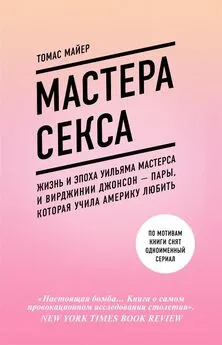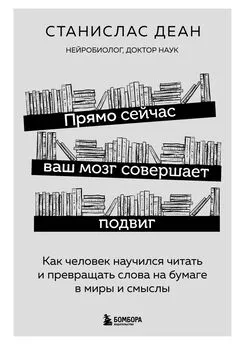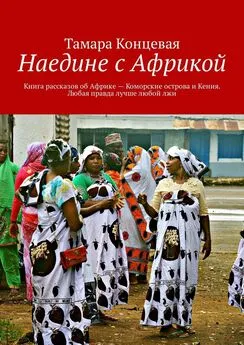Станислас Деан - Как мы учимся. Почему мозг учится лучше, чем любая машина… пока
- Название:Как мы учимся. Почему мозг учится лучше, чем любая машина… пока
- Автор:
- Жанр:
- Издательство:Эксмо
- Год:2021
- Город:Москва
- ISBN:978-5-04-113024-4
- Рейтинг:
- Избранное:Добавить в избранное
-
Отзывы:
-
Ваша оценка:
Станислас Деан - Как мы учимся. Почему мозг учится лучше, чем любая машина… пока краткое содержание
В формате PDF A4 сохранен издательский макет.
Как мы учимся. Почему мозг учится лучше, чем любая машина… пока - читать онлайн бесплатно ознакомительный отрывок
Интервал:
Закладка:
Fodor, J. A. (1975). The language of thought . New York, NY: Thomas Y. Crowell.
Fodor, J. A., & Pylyshyn, Z. W. (1988). Connectionism and cognitive architecture: A critical analysis. Cognition , 28(1–2), 3–71.
Fodor, J., & McLaughlin, B. P. (1990). Connectionism and the problem of systematicity: Why Smolensky’s solution doesn’t work. Cognition , 35(2), 183–204.
Frank, M. C., Everett, D. L., Fedorenko, E., & Gibson, E. (2008). Number as a cognitive technology: Evidence from Pirahã language and cognition. Cognition , 108(3), 819–824.
Freeman, S., Eddy, S. L., McDonough, M., Smith, M. K., Okoroafor, N., Jordt, H., & Wenderoth, M. P. (2014). Active learning increases student performance in science, engineering, and mathematics. Proceedings of the National Academy of Sciences , 111(23), 8410–8415.
Friederici, A. D. (2002). Towards a neural basis of auditory sentence processing. Trends in Cognitive Sciences , 6(2), 78–84.
Friedmann, N., Kerbel, N., & Shvimer, L. (2010). Developmental attentional dyslexia. Cortex , 46(10), 1216–1237.
Friedmann, N., & Rusou, D. (2015). Critical period for first language: The crucial role of language input during the first year of life. Current Opinion in Neurobiology , 35, 27–34.
Friedrich, M., Wilhelm, I., Born, J., & Friederici, A. D. (2015). Generalization of word meanings during infant sleep. Nature Communications , 6, 6004.
Friston, K. (2005). A theory of cortical responses. Philosophical Transactions of the Royal Society B: Biological Sciences , 360(1456), 815–836.
Froemke, R. C., Merzenich, M. M., & Schreiner, C. E. (2007). A synaptic memory trace for cortical receptive field plasticity. Nature , 450(7168), 425–429.
Fukuchi-Shimogori, T., & Grove, E. A. (2001). Neocortex patterning by the secreted signaling molecule FGF8. Science , 294(5544), 1071–1074.
Fyhn, M., Molden, S., Witter, M. P., Moser, E. I., & Moser, M.-B. (2004). Spatial representation in the entorhinal cortex. Science , 305(5688), 1258–1264.
Galaburda, A. M., LoTurco, J., Ramus, F., Fitch, R. H., & Rosen, G. D. (2006). From genes to behavior in developmental dyslexia. Nature Neuroscience , 9(10), 1213–1217.
Galgali, A. R., & Mante, V. (2018). Set in one’s thoughts. Nature Neuroscience , 21(4), 459–460.
Gallistel, C. R. (1990). The organization of learning . Cambridge, MA: MIT Press.
Gaser, C., & Schlaug, G. (2003). Brain structures differ between musicians and nonmusicians. Journal of Neuroscience , 23(27), 9240–9245.
Gathercole, S. E., Pickering, S. J., Knight, C., & Stegmann, Z. (2004). Working memory skills and educational attainment: Evidence from national curriculum assessments at 7 and 14 years of age. Applied Cognitive Psychology , 18(1), 1–16.
Geary, D. C. (2011). Cognitive predictors of achievement growth in mathematics: A five-year longitudinal study. Developmental Psychology , 47(6), 1539–1552.
Genzel, L., Rossato, J. I., Jacobse, J., Grieves, R. M., Spooner, P. A., Battaglia, F. P., Morris, R. G. M. (2017). The yin and yang of memory consolidation: Hippocampal and neocortical. PLOS Biology , 15(1), e2000531.
George, D., Lehrach, W., Kansky, K., Lázaro-Gredilla, M., Laan, C., Marthi, B., Phoenix, D. S. (2017). A generative vision model that trains with high data efficiency and breaks text-based CAPTCHAs. Science , 358(6368).
Gerber, P., Schlaffke, L., Heba, S., Greenlee, M. W., Schultz, T., & Schmidt-Wilcke, T. (2014). Juggling revisited – a voxel-based morphometry study with expert jugglers. NeuroImage , 95, 320–325.
Gergely, G., Bekkering, H., & Király, I. (2002). Rational imitation in preverbal infants. Nature , 415(6873), 755.
Gergely, G., & Csibra, G. (2003). Teleological reasoning in infancy: The naïve theory of rational action. Trends in Cognitive Sciences , 7(7), 287–292.
Gerhand, S., & Barry, C. (1999). Age of acquisition, word frequency, and the role of phonology in the lexical decision task. Memory and Cognition , 27(4), 592–602.
Gertler, P., Heckman, J., Pinto, R., Zanolini, A., Vermeersch, C., Walker, S., Grantham-McGregor, S. (2014). Labor market returns to an early childhood stimulation intervention in Jamaica. Science , 344(6187), 998–1001.
Glass, A. L., & Kang, M. (2018). Dividing attention in the classroom reduces exam performance. Educational Psychology , 39(3), 395–408.
Goldman-Rakic, P. S. (1995). Cellular basis of working memory. Neuron , 14(3), 477–485.
Golestani, N., Molko, N., Dehaene, S., Le Bihan, D., & Pallier, C. (2007). Brain structure predicts the learning of foreign speech sounds. Cerebral Cortex , 17(3), 575–582.
Golub, M. D., Sadtler, P. T., Oby, E. R., Quick, K. M., Ryu, S. I., Tyler-Kabara, E. C., Yu, B. M. (2018). Learning by neural reassociation. Nature Neuroscience , 21(4), 607–616.
Goodfellow, I. J., Pouget-Abadie, J., Mirza, M., Xu, B., Warde-Farley, D., Ozair, S., Bengio, Y. (2014). Generative adversarial networks. arxiv.org/abs/1406.2661.
Goodman, C. S., & Shatz, C. J. (1993). Developmental mechanisms that generate precise patterns of neuronal connectivity. Cell , 72 Suppl, 77–98.
Goodman, N. D., Ullman, T. D., & Tenenbaum, J. B. (2011). Learning a theory of causality. Psychological Review , 118(1), 110–119.
Gopnik, A., Glymour, C., Sobel, D. M., Schulz, L. E., Kushnir, T., & Danks, D. (2004). A theory of causal learning in children: Causal maps and Bayes nets. Psychological Review , 111(1), 3–32.
Gopnik, A., Meltzoff, A. N., & Kuhl, P. K. (1999). The scientist in the crib: What early learning tells us about the mind . New York, NY: William Morrow.
Gottlieb, J., Oudeyer, P.-Y., Lopes, M., & Baranes, A. (2013). Information-seeking, curiosity, and attention: Computational and neural mechanisms. Trends in Cognitive Sciences , 17(11), 585–593.
Goupil, L., Romand-Monnier, M., & Kouider, S. (2016). Infants ask for help when they know they don’t know. Proceedings of the National Academy of Sciences , 113(13), 3492–3496.
Grainger, J., & Whitney, C. (2004). Does the huamn mnid raed wrods as a wlohe? Trends in Cognitive Sciences , 8(2), 58–59.
Grantham-McGregor, S. M., Powell, C. A., Walker, S. P., & Himes, J. H. (1991). Nutritional supplementation, psychosocial stimulation, and mental development of stunted children: The Jamaican Study. Lancet , 338(8758), 1–5.
Green, C. S., & Bavelier, D. (2003). Action video game modifies visual selective attention. Nature , 423(6939), 534–537.
Groen, G. J., & Parkman, J. M. (1972). A chronometric analysis of simple addition. Psychological Review , 79(4), 329–343.
Grothendieck, A. (1986). Récoltes et semailles: Réflexions et témoignage sur un passé de mathématicien. quarante-deux.org/archives/klein/prefaces/Romans_1965–1969/Recoltes_et_semailles.pdf.
Gruber, M. J., Gelman, B. D., & Ranganath, C. (2014). States of curiosity modulate hippocampus-dependent learning via the dopaminergic circuit. Neuron , 84(2), 486–496.
Guerguiev, J., Lillicrap, T. P., & Richards, B. A. (2017). Towards deep learning with segregated dendrites. ELife , 6, e22901.
Gullick, M. M., & Wolford, G. (2013). Understanding less than nothing: Children’s neural response to negative numbers shifts across age and accuracy. Frontiers in Psychology , 4, 584.
Gweon, H., Tenenbaum, J. B., & Schulz, L. E. (2010). Infants consider both the sample and the sampling process in inductive generalization. Proceedings of the National Academy of Sciences , 107(20), 9066–9071.
Habibi, A., Damasio, A., Ilari, B., Elliott Sachs, M., & Damasio, H. (2018). Music training and child development: A review of recent findings from a longitudinal study. Annals of the New York Academy of Sciences .
Hafting, T., Fyhn, M., Molden, S., Moser, M.-B., & Moser, E. I. (2005). Microstructure of a spatial map in the entorhinal cortex. Nature , 436(7052), 801–806.
Hahne, A., & Friederici, A. D. (1999). Electrophysiological evidence for two steps in syntactic analysis: Early automatic and late controlled processes. Journal of Cognitive Neuroscience , 11(2), 194–205.
Halberda, J., & Feigenson, L. (2008). Developmental change in the acuity of the «number sense»: The approximate number system in 3-, 4-, 5-, and 6-year-olds and adults. Developmental Psychology , 44(5), 1457–1465.
Hannagan, T., Amedi, A., Cohen, L., Dehaene-Lambertz, G., & Dehaene, S. (2015). Origins of the specialization for letters and numbers in ventral occipitotemporal cortex. Trends in Cognitive Sciences , 19(7), 374–382.
Hannagan, T., Nieder, A., Viswanathan, P., & Dehaene, S. (2017). A random-matrix theory of the number sense. Philosophical Transactions of the Royal Society B: Biological Sciences , 373(1740), 20170253.
Hartshorne, J. K., Tenenbaum, J. B., & Pinker, S. (2018). A critical period for second language acquisition: Evidence from ⅔ million English speakers. Cognition , 177, 263–277.
Hassabis, D., Kumaran, D., Summerfield, C., & Botvinick, M. (2017). Neuroscience-inspired artificial intelligence. Neuron , 95(2), 245–258.
Hattie, J. (2008). Visible learning . London and New York, NY: Routledge.
Hattie, J. (2017). L’apprentissage visible pour les enseignants: Connaître son impact pour maximiser le rendement des élèves . Québec: Presses de l’Université du Québec.
Hauser, M. D., Chomsky, N., & Fitch, W. T. (2002). The faculty of language: What is it, who has it, and how did it evolve? Science , 298(5598), 1569–1579.
Hauser, M. D., & Watumull, J. (2017). The Universal Generative Faculty: The source of our expressive power in language, mathematics, morality, and music. Journal of Neurolinguistics , 43 Part B, 78–94.
Hay, J. F., Pelucchi, B., Graf Estes, K., & Saffran, J. R. (2011). Linking sounds to meanings: Infant statistical learning in a natural language. Cognitive Psychology , 63(2), 93–106.
Heckman, J. J., Moon, S. H., Pinto, R., Savelyev, P. A., & Yavitz, A. (2010). The rate of return to the HighScope Perry Preschool Program. Journal of Public Economics , 94(1), 114–128.
Heilbron, M., & Meyniel, F. (2019). Confidence resets reveal hierarchical adaptive learning in humans. PLOS Computational Biology , 15(4), e1006972. doi.org/10.1371/journal.pcbi.1006972.
Held, R., & Hein, A. (1963). Movement-produced stimulation in the development of visually guided behavior. Journal of Comparative and Physiological Psychology , 56(5), 872–876.
Hensch, T. K. (2005). Critical period plasticity in local cortical circuits. Nature Reviews Neuroscience , 6(11), 877–888.
Hespos, S. J., & Baillargeon, R. (2008). Young infants’ actions reveal their developing knowledge of support variables: Converging evidence for violation-of-expectation findings. Cognition , 107(1), 304–316.
Hinton, G. E., Dayan, P., Frey, B. J., & Neal, R. M. (1995). The «wake-sleep» algorithm for unsupervised neural networks. Science , 268(5214), 1158–1161.
Hinton, G. E., Osindero, S., & Teh, Y.-W. (2006). A fast learning algorithm for deep belief nets. Neural Computation , 18(7), 1527–1554.
Hiscock, H., Sciberras, E., Mensah, F., Gerner, B., Efron, D., Khano, S., & Oberklaid, F. (2015). Impact of a behavioural sleep intervention on symptoms and sleep in children with attention deficit hyperactivity disorder, and parental mental health: Randomised controlled trial. BMJ (Clinical Research Ed.) , 350, h68.
Читать дальшеИнтервал:
Закладка:
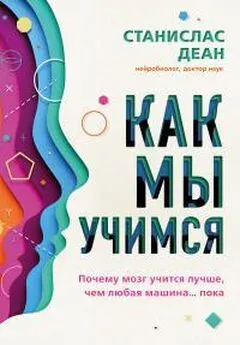
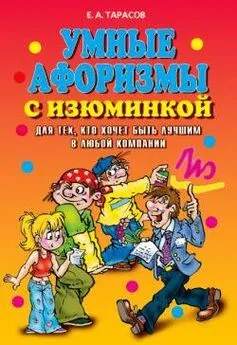


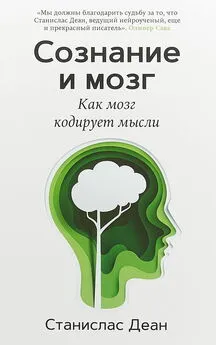
![Кэролайн Уилльямс - Мой продуктивный мозг [Как я проверила на себе лучшие методики саморазвития и что из этого вышло]](/books/1096012/kerolajn-uillyams-moj-produktivnyj-mozg-kak-ya-pro.webp)
